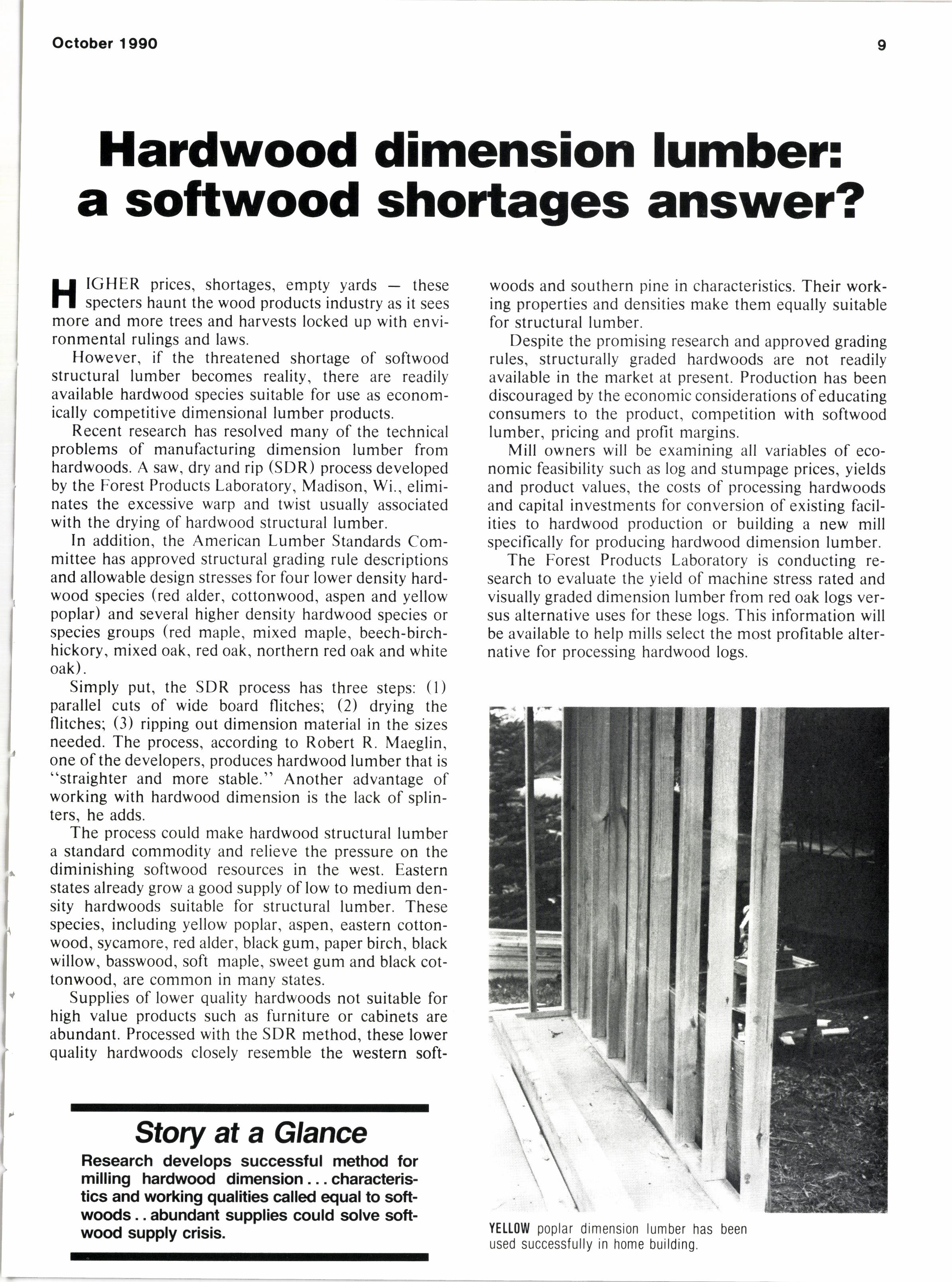
2 minute read
Hardwood dimension lumber: a softwood shortages answer?
Ll IGHER prices, shortages, empty yardsthese I I specters haunt the wood products industry as it sees more and more trees and harvests locked up with environmental rulings and laws.
However, if the threatened shortage of softwood structural lumber becomes reality, there are readily available hardwood species suitable for use as economically competitive dimensional lumber products.
Recent research has resolved many of the technical problems of manufacturing dimension lumber from hardwoods. A saw, dry and rip (SDR) process developed by the Forest Products Laboratory, Madison, Wi., eliminates the excessive warp and twist usually associated with the drying of hardwood structural lumber.
In addition, the American Lumber Standards Committee has approved structural grading rule descriptions and allowable design stresses for four lower density hardwood species (red alder, cottonwood, aspen and yellow poplar) and several higher density hardwood species or species groups (red maple, mixed maple, beech-birchhickory, mixed oak, red oak, northern red oak and white oak).
Simply put, the SDR process has three steps: (1) parallel cuts of wide board flitches; (2) drying the flitches; (3) ripping out dimension material in the sizes needed. The process, according to Robert R. Maeglin, one of the developers, produces hardwood lumber that is "straighter and more stable." Another advantage of working with hardwood dimension is the lack of splinters, he adds.
The process could make hardwood structural lumber a standard commodity and relieve the pressure on the diminishing softwood resources in the west. Eastern states already grow a good supply of low to medium density hardwoods suitable for structural lumber. These species, including yellow poplar, aspen, eastern cottonwood, sycamore, red alder, black gum, paper birch, black willow, basswood, soft maple, sweet gum and black cottonwood, are common in many states.
Supplies of lower quality hardwoods not suitable for high value products such as furniture or cabinets are abundant. Processed with the SDR method, these lower quality hardwoods closely resemble the western soft-
Story at a Glance
Research develops successful method for milling hardwood dimension... characteris. tics and working qualities called equalto softwoods. abundant supplies could solve softwood supply crisis.
woods and southern pine in characteristics. Their working properties and densities make them equally suitable for structural lumber.
Despite the promising research and approved grading rules, structurally graded hardwoods are not readily available in the market at present. Production has been discouraged by the economic considerations of educating consumers to the product, competition with softwood lumber, pricing and profit margins.
Mill owners will be examining all variables of economic feasibility such as log and stumpage prices, yields and product values, the costs of processing hardwoods and capital investments for conversion of existing facilities to hardwood production or building a new mill specifically for producing hardwood dimension lumber.
The Forest Products Laboratory is conducting research to evaluate the yield of machine stress rated and visually graded dimension lumber from red oak logs versus alternative uses for these logs. This information will be available to help mills select the most profitable alternative for processing hardwood logs.










